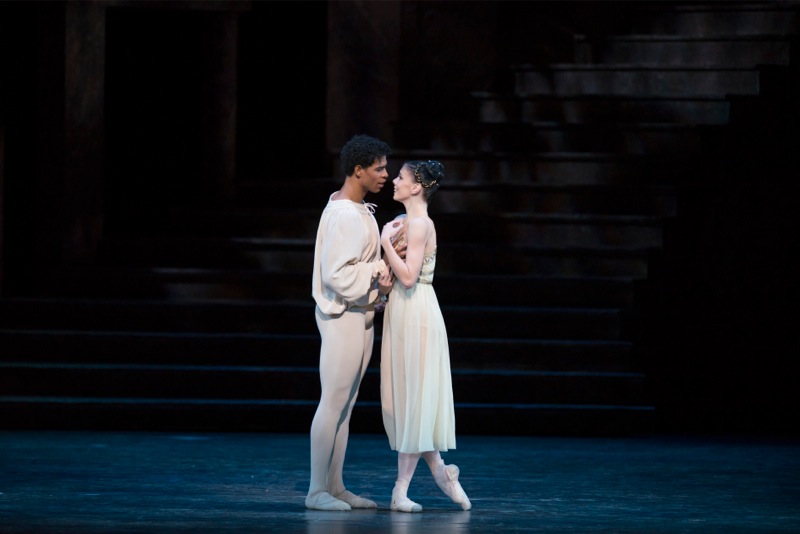Romeo and Juliet, with Acosta and Osipova, Royal Ballet, Covent Garden, November 2013
Posted on 22 November 2013Having now joined the Royal Ballet as a Company member rather than a guest artist, Natalia Osipova’s performance of Juliet was much anticipated. Her technique and dramatic flair served her well, particularly in the final scene of Act III when her body crumpled like a rag doll in Carlos Acosta’s arms. It was a fine ending to the ballet, though at the start, particularly in that first scene with her nurse, she seemed a rather more knowing Juliet than the ingénue that MacMillan’s choreography calls for. Superb partnering by Carlos Acosta, whose Romeo exhibited a great feeling of insouciance and youthful passion as he switches his undying affections from Rosaline to Juliet in Act I.

Acosta and Osipova, ©ROH/ Bill Cooper
Fine dancing from Ricardo Cervera and Dawid Trzensimiech as Romeo’s friends Mercutio and Benvolio, and I particularly admired Trzensimiech’s precision and musicality. Valeri Hristov made a marvellously unattractive Paris under the tutelage of Juliet’s father, portrayed by Christopher Saunders, who seems to have toned down the brutality he once gave to that role. But among the male supporting cast it was Gary Avis as Tybalt who made the most memorable impression in Acts I and II. His magnificent stage presence allows him to play the role without bravado, making it all the more realistic. In Act II the loss of his rapier to that irritatingly fine swordsman Mercutio appears infuriatingly natural, but after stabbing his opponent he looks askance at the blood. As Mercutio dies he points his sword menacingly at Romeo, making it clear this is the battle he really wants, even if he shows himself too tired and out of sorts to win it. This was a terrific portrayal, his final death throw across the stage a riveting moment, just as the choreography demands.
Among other supporting roles, no one quite does Lady Capulet’s agony like Elizabeth McGorian, and as the three whores, Laura Morera, Laura McCulloch and Romany Pajdak were full of provocative energy — where would we be without them? But despite flawless technique from Osipova, and a fine performance from the whole company there was something missing. Why did the monks in Act III appear to scuttle off so quickly from the tomb on stage left? The musical tempo at that point did not seem right, but in any case conductor Barry Wordsworth was not in command of the orchestra. It showed a notable lack of life in the first market-place scene, the brass was out of control when the bodies were being piled up after the big fight, and so was the whole orchestra when the guests arrived at the party.
It was wonderful to see Osipova dancing as an integral member of the Company, which performed with admirable energy and precision, but they have to get the music right. It is not usual to hear shouts of ‘rubbish’ directed at the Royal Opera House orchestra, but I’m afraid I blame the conductor.
Performances with various casts continue until December 7 — for details click here.

